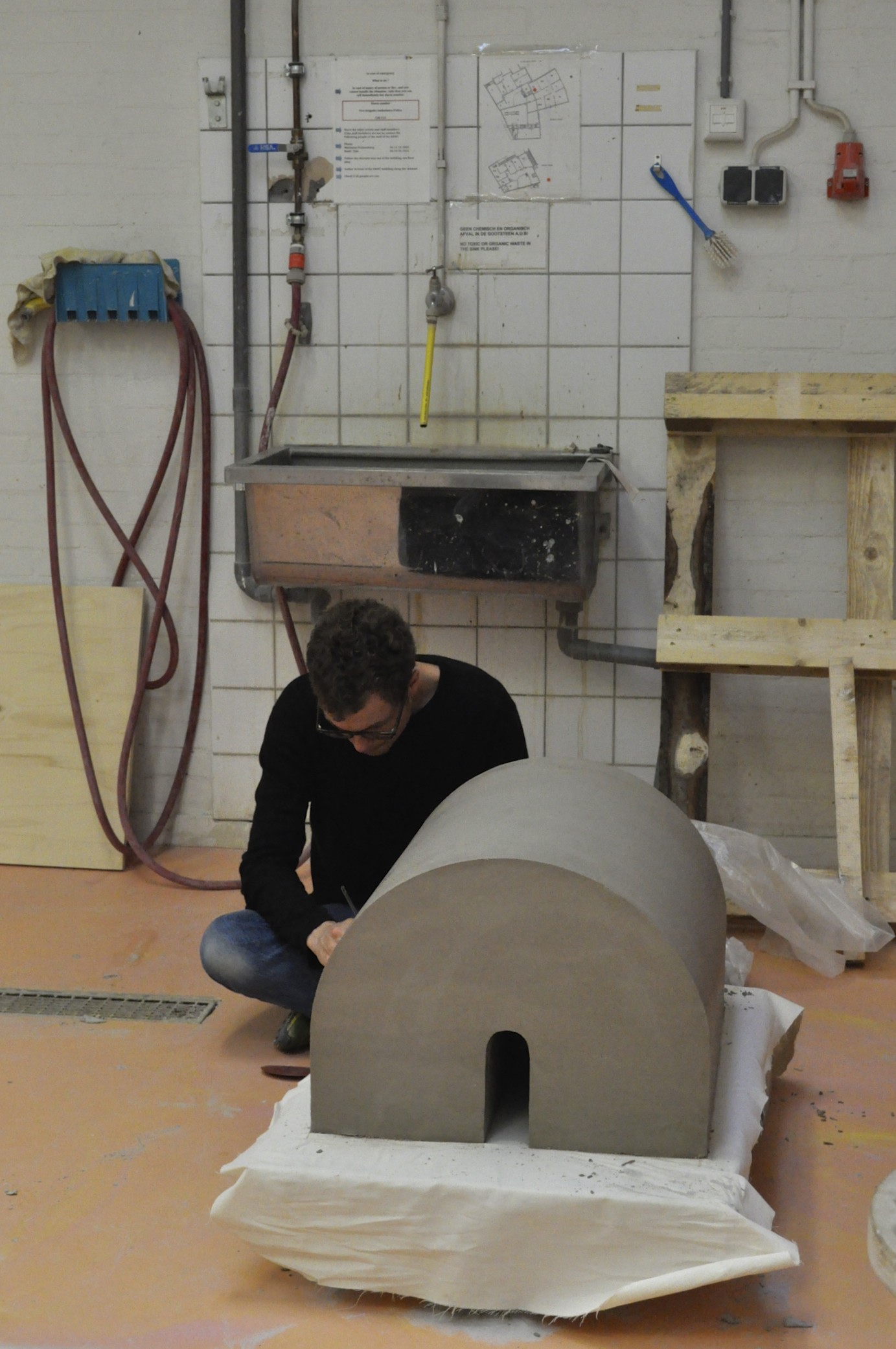KEYSTONE
The whole is greater then the sum of it’s parts? The Keystone project began as an investigation into just that, where loose autonomous objects create balance, which is created through the underlying relationship of the separate elements.
![]()
These parts associate with the three basic elements of a roman bridge (which for us serves as the best example of when loose parts come together to create a whole); the spanners (elements which connect the bridge to the surface and ensure this foothold does not slide or move), the elemental building blocks, and the keystone (which when inserted completes the fundamental arch shape).
Our abstracted and reassembled versions of these three elements lead to the Keystone chair, a chair where there are no physical connections. Only it’s shear weight is what holds the whole together. Made from concrete (back rest), rubber (keystone) and ceramics (sit surface). By using each other’s strengths, an independent structure is formed.
The ceramic sit was made with particular attention at the EKWC (European Ceramics Center) where 200 kg of clay was painstakingly placed within the mold by hand and no less then 12 weeks were needed to let the object dry before it could be place in the kiln.
In its entirety the Keystone chair weights 410 kg, and despite there being no physical connections between each piece, the chair is functional and inspires confidence even though the parts can come loose from each other.
edition: 2 unique pieces
The whole is greater then the sum of it’s parts? The Keystone project began as an investigation into just that, where loose autonomous objects create balance, which is created through the underlying relationship of the separate elements.

These parts associate with the three basic elements of a roman bridge (which for us serves as the best example of when loose parts come together to create a whole); the spanners (elements which connect the bridge to the surface and ensure this foothold does not slide or move), the elemental building blocks, and the keystone (which when inserted completes the fundamental arch shape).
Our abstracted and reassembled versions of these three elements lead to the Keystone chair, a chair where there are no physical connections. Only it’s shear weight is what holds the whole together. Made from concrete (back rest), rubber (keystone) and ceramics (sit surface). By using each other’s strengths, an independent structure is formed.
The ceramic sit was made with particular attention at the EKWC (European Ceramics Center) where 200 kg of clay was painstakingly placed within the mold by hand and no less then 12 weeks were needed to let the object dry before it could be place in the kiln.
In its entirety the Keystone chair weights 410 kg, and despite there being no physical connections between each piece, the chair is functional and inspires confidence even though the parts can come loose from each other.
edition: 2 unique pieces
dimensions: 91 x 76 x 80 cm




Keystone at Bagatti Valsecchi Museum
curated by Rossana Orlandi Salone del Mobile 2013
proces photos
Ceramic arch is made at the European Ceramic Center (EKWC)

